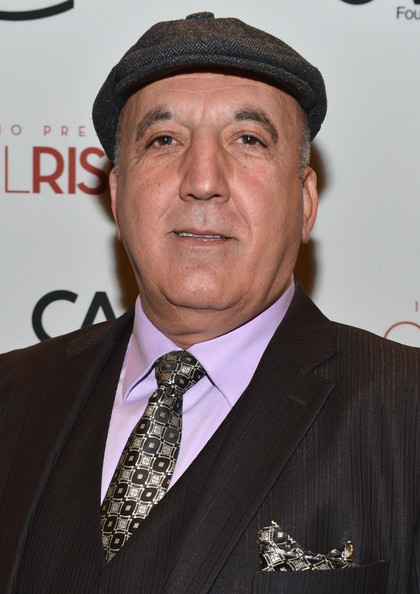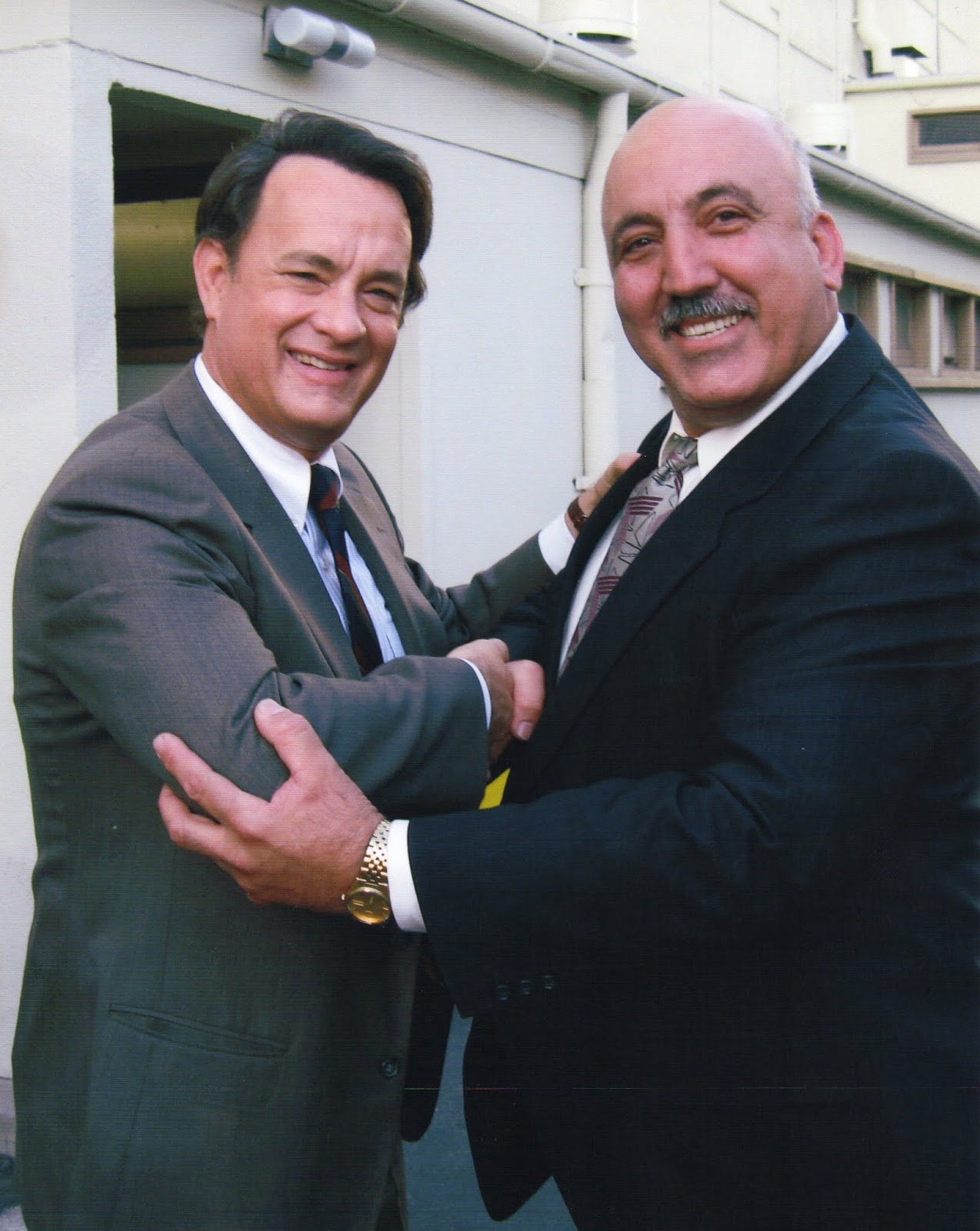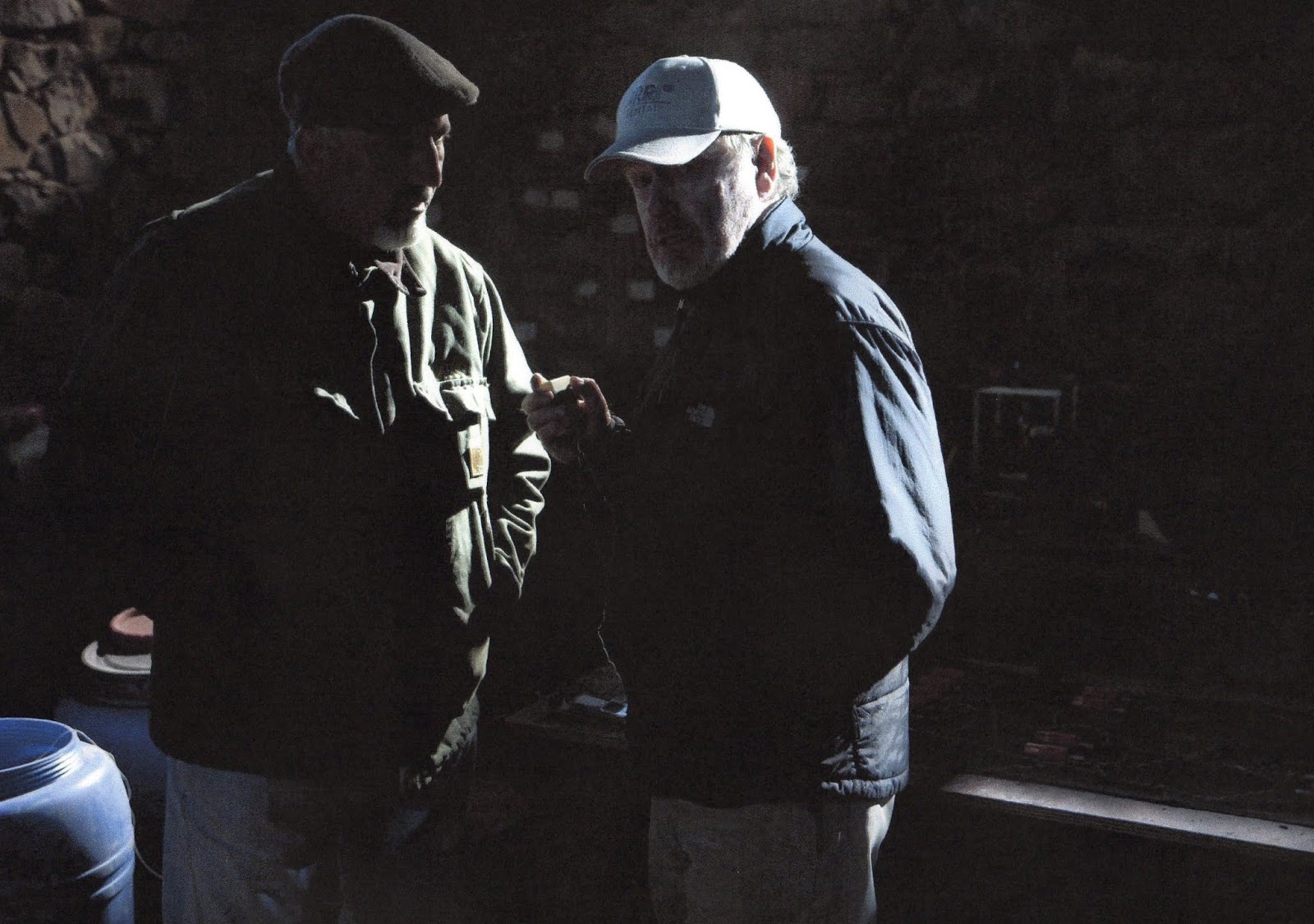by Sherif Awad
Iraqi-born, Los Angeles-based Sam Sako is one of few Arab
cineastes who made it big in Hollywood to the point that Arab actors now call
him Sheikh El Shabab, a nickname that fits his warm welcome, his
fatherly figure and his big heart that urges him to give a helping hand to
everybody. Actor, casting director, script consultant and dialect coach, Sako was
a crew member in major films that involved Arab characters like Michael Mann’s The
Insider with Al Pacino, Ridley Scott’s Body of Lies with Leonardo
Dicaprio, Hidalgo with Omar Sharif, The Man with One Red Shoe and
Charlie Wilson’s War with Tom Hanks. When I recently met Sako in Los
Angeles, he was already working with Kieffer Sutherland in his new TV series Touch
and with Robert Downey Jr. in the new Iron Man 3 that is scheduled for
release in the summer of 2013. As actor in front of the camera, Sako can be spotted
doing guest roles in films like Beverly Hills Cop II with Eddie Murphy
and Protocol with Goldie Hawn.
cineastes who made it big in Hollywood to the point that Arab actors now call
him Sheikh El Shabab, a nickname that fits his warm welcome, his
fatherly figure and his big heart that urges him to give a helping hand to
everybody. Actor, casting director, script consultant and dialect coach, Sako was
a crew member in major films that involved Arab characters like Michael Mann’s The
Insider with Al Pacino, Ridley Scott’s Body of Lies with Leonardo
Dicaprio, Hidalgo with Omar Sharif, The Man with One Red Shoe and
Charlie Wilson’s War with Tom Hanks. When I recently met Sako in Los
Angeles, he was already working with Kieffer Sutherland in his new TV series Touch
and with Robert Downey Jr. in the new Iron Man 3 that is scheduled for
release in the summer of 2013. As actor in front of the camera, Sako can be spotted
doing guest roles in films like Beverly Hills Cop II with Eddie Murphy
and Protocol with Goldie Hawn.
Sam Sako’s journey to Hollywood and its A-list of big stars
and famous filmmakers nearly began four decades ago. Born Essam Gabriel Sako in
Tal-Asqaf, a small village close to Mosul in north Iraq, he grew up with a
talent in fixing things, which first drove him to develop an interest in
studying mechanical engineering as a young man. During the 1970s, most members
of his family started to emigrate from Iraq; half of them reallocated in Egypt
and the rest moved to the United States. In 1979, it was Sako’s turn to join his family
in Detroit in order to study engineering in Wayne University, Michigan. “My
original admiration of leading men of the 1970s like Charles Bronson and Clint
Eastwood was stronger. So, after two years in Wayne, I dropped off in order to
move to California and study filmmaking. “I was like so where is
California? West? And I found myself driving four days until I reached Los
Angeles. In the beginning, it was very difficult because I did not know anybody
there. I was spending the nights in my car until I started to run out of money.
Eventually, I got my first break when I accidentally met big time producers who
hired me to work in a Warne Bros’ documentary series called Casablanca that
was focusing on Arabs. My task was to
make researches for the series as well as casting Arabs from the LA community.
With the fees I got, I started to study filmmaking in UCLA and to make a living
at the same time”, he remembers.
and famous filmmakers nearly began four decades ago. Born Essam Gabriel Sako in
Tal-Asqaf, a small village close to Mosul in north Iraq, he grew up with a
talent in fixing things, which first drove him to develop an interest in
studying mechanical engineering as a young man. During the 1970s, most members
of his family started to emigrate from Iraq; half of them reallocated in Egypt
and the rest moved to the United States. In 1979, it was Sako’s turn to join his family
in Detroit in order to study engineering in Wayne University, Michigan. “My
original admiration of leading men of the 1970s like Charles Bronson and Clint
Eastwood was stronger. So, after two years in Wayne, I dropped off in order to
move to California and study filmmaking. “I was like so where is
California? West? And I found myself driving four days until I reached Los
Angeles. In the beginning, it was very difficult because I did not know anybody
there. I was spending the nights in my car until I started to run out of money.
Eventually, I got my first break when I accidentally met big time producers who
hired me to work in a Warne Bros’ documentary series called Casablanca that
was focusing on Arabs. My task was to
make researches for the series as well as casting Arabs from the LA community.
With the fees I got, I started to study filmmaking in UCLA and to make a living
at the same time”, he remembers.
Since day one in Hollywood, Sako was more interested in doing
prep works behind the camera. “To appear on celluloid, you should not have only
an agent or a Screen Actors Guild membership or a Social Security Number, but
you must have also someone who recommends you and he is better to be a family
member”, explains Sako who sees things working there in the same way they
happen in our Arab country. In other words, Hollywood also needs a little bit Wasta
in addition to real talents. “However, since our graduation in 1988, my college
mates who became filmmakers kept in touch with me in order to work in their new films because I
know my way around”, he explained.
prep works behind the camera. “To appear on celluloid, you should not have only
an agent or a Screen Actors Guild membership or a Social Security Number, but
you must have also someone who recommends you and he is better to be a family
member”, explains Sako who sees things working there in the same way they
happen in our Arab country. In other words, Hollywood also needs a little bit Wasta
in addition to real talents. “However, since our graduation in 1988, my college
mates who became filmmakers kept in touch with me in order to work in their new films because I
know my way around”, he explained.
Many young Arabs come to Hollywood with big dreams of breaking
into stardom and wealth. Sako always tries to help them although he knows it is
too difficult to get under the limelight. “Most roles offered to Arab actors by
major studios are stereotypical. They are either terrorists or oil tycoons. I.e.
the middle class does not exist in Hollywood”, says Sam who was witnessing the
change of the portrayal of Iraq in Hollywood films throughout the years. “During the 1980s, when Saddam Hussein went
into war with Iran, Iraq was first-rate and the best Arab country
portrayed in Hollywood. Then, everything changed when Bush came onboard because
US Politics and Hollywood films walk together on two parallel lines. Yet
recently, I notice that a change for the better has started to happen in the
ways Hollywood sees the Arab world. Films like Rendition with Jake
Gyllenhaal, Green Zone with Matt Damon and Fair Game with Sean
Penn were warmly welcomed in the Arab world because they showed both sides of
the story. The image is gradually changing and the portrayals are becoming more
mature and three dimensional on the screen”, he says. Sako worked recently on
an independent short film called Refuge by American filmmaker Michelle
Steffes in which she sheds the lights on hostage situations currently taking
place in Iraq. Shot in Los Angeles standing for Baghdad, it is the true story
of an Iraqi young man called Nabil, played by Mustafa Knight, who moves to a
new building only to discover that his neighbor could be the abductor of his
deceased wife. Sako helped Steffes in casting, script supervision and many
technical aspects during the shooting to make a location in LA looks like
Baghdad nowadays. Refuge was recently screened to applause in the 10th
edition 168 Film Festival in Los Angeles.
into stardom and wealth. Sako always tries to help them although he knows it is
too difficult to get under the limelight. “Most roles offered to Arab actors by
major studios are stereotypical. They are either terrorists or oil tycoons. I.e.
the middle class does not exist in Hollywood”, says Sam who was witnessing the
change of the portrayal of Iraq in Hollywood films throughout the years. “During the 1980s, when Saddam Hussein went
into war with Iran, Iraq was first-rate and the best Arab country
portrayed in Hollywood. Then, everything changed when Bush came onboard because
US Politics and Hollywood films walk together on two parallel lines. Yet
recently, I notice that a change for the better has started to happen in the
ways Hollywood sees the Arab world. Films like Rendition with Jake
Gyllenhaal, Green Zone with Matt Damon and Fair Game with Sean
Penn were warmly welcomed in the Arab world because they showed both sides of
the story. The image is gradually changing and the portrayals are becoming more
mature and three dimensional on the screen”, he says. Sako worked recently on
an independent short film called Refuge by American filmmaker Michelle
Steffes in which she sheds the lights on hostage situations currently taking
place in Iraq. Shot in Los Angeles standing for Baghdad, it is the true story
of an Iraqi young man called Nabil, played by Mustafa Knight, who moves to a
new building only to discover that his neighbor could be the abductor of his
deceased wife. Sako helped Steffes in casting, script supervision and many
technical aspects during the shooting to make a location in LA looks like
Baghdad nowadays. Refuge was recently screened to applause in the 10th
edition 168 Film Festival in Los Angeles.
East and West
Through his agency Middle East in Hollywood and its website,
Sako receives tons of e-mails and CVs from young men and women who want to act
in Hollywood films. “It is not easy to get inside Hollywood. Papers and Union
Membership and talents are not enough.
Sako receives tons of e-mails and CVs from young men and women who want to act
in Hollywood films. “It is not easy to get inside Hollywood. Papers and Union
Membership and talents are not enough.
Unfortunately, many Egyptian films that involved American
themes and that was partially shot in the US like Lost in America with
Khaled El-Nabawy, Hallo Amrika with Adel Imam and Baby Doll Night,
competed with Hollywood films and its oriental vision of Arabs by presenting a
shallow and stereotypical look of America for our Egyptian viewers. That why’s
I asked Sako about bringing his own experience to the Arab world in order to
narrow the social and cultural gaps between East and West. “All my life, I was
trying to present a realistic image of Arabs in big films. I hope that I can
help to build a bridge between Hollywood and the Middle East. This started to
happen when I worked on the short film Casualties that was co-financed
by Dubai Festival in 2010. I hope that many Arab actors like El-Nabawy and Amr
Waked could come and work. Some of them have the potential to breakthrough like
Ahmed Al-Sakka and Mona Zaki. Sometimes, big directors go to hire Indian or
Persian actors to play Arab roles because we don’t have enough talented Arabs
here in Hollywood.
themes and that was partially shot in the US like Lost in America with
Khaled El-Nabawy, Hallo Amrika with Adel Imam and Baby Doll Night,
competed with Hollywood films and its oriental vision of Arabs by presenting a
shallow and stereotypical look of America for our Egyptian viewers. That why’s
I asked Sako about bringing his own experience to the Arab world in order to
narrow the social and cultural gaps between East and West. “All my life, I was
trying to present a realistic image of Arabs in big films. I hope that I can
help to build a bridge between Hollywood and the Middle East. This started to
happen when I worked on the short film Casualties that was co-financed
by Dubai Festival in 2010. I hope that many Arab actors like El-Nabawy and Amr
Waked could come and work. Some of them have the potential to breakthrough like
Ahmed Al-Sakka and Mona Zaki. Sometimes, big directors go to hire Indian or
Persian actors to play Arab roles because we don’t have enough talented Arabs
here in Hollywood.






